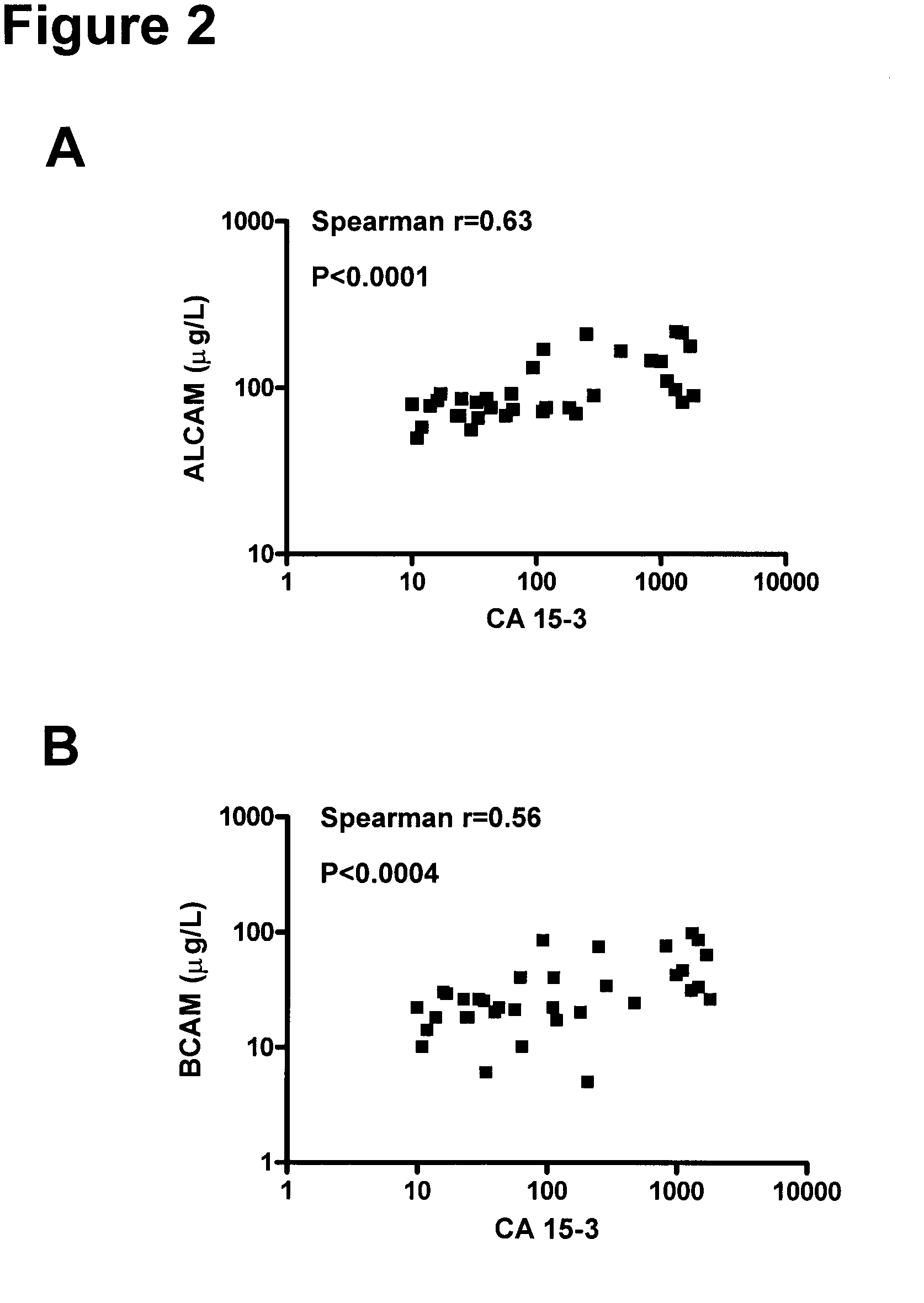Method for the detection of breast cancer by determining alcam and/or bcam levels in a patient
- Summary
- Abstract
- Description
- Claims
- Application Information
AI Technical Summary
Benefits of technology
Problems solved by technology
Method used
Image
Examples
example 1
Materials & Methods
Cell Lines
[0142]The breast epithelial cell line MCF-10A, and the breast cancer cell lines BT-474 and MDA-MB-468 were purchased from the American Type Culture Collection (ATCC), Rockville, Md. MCF-10A was maintained in Dulbecco's modified Eagle's medium and F12 medium (DMEM / F12) supplemented with 8% fetal bovine serum (FBS), epidermal growth factor (20 ng / mL), hydrocortisone (0.5 μg / mL), cholera toxin (100 ng / mL) and insulin (10 μg / mL). BT-474 and MDA-MB-468 were maintained in phenol-red-free RPMI 1640 culture medium (Gibco) supplemented with 8% FBS. All cells were cultured in a humidified incubator at 37° C. and 5% CO2 in tissue culture T-75 cm2 flasks.
Cell Culture
[0143]Approximately 30×106 cells were seeded individually into six 175 cm2 tissue culture flasks per cell line. After 2 days, the RPMI or DMEM / F12 media were discarded and the cells rinsed twice with 1× phosphate buffered saline (PBS). Following this, 30 mL of Chemically Defined Chinese Hamster Ovary (CD...
example 2
Materials and Methods
[0164]Applicable methods and materials as described in Example 1 were used.
Patients and Specimens
[0165]The clinical material used consisted of 150 serum samples from primary breast cancer patients (ages 34 to 82 years; median, 62 years), 100 serum samples from normal, apparently healthy women (ages 24 to 56 years; median, 40 years), and as an additional control, 50 serum samples from normal healthy men (ages 23 to 61 years; median, 48 years). The samples from primary breast cancer patients were from untreated individuals collected prior to surgery. Histologically, 94 were classified as invasive ductal carcinoma and / or multifocal invasive ductal carcinoma, 24 as invasive lobular carcinoma and / or multifocal invasive lobular carcinoma and 32 as either invasive ductal carcinoma+invasive lobular carcinoma, invasive ductal carcinoma with various aspects, lobular carcinoma in situ, medullary carcinoma or other. Histologic classification was based on the World Health Or...
PUM
 Login to View More
Login to View More Abstract
Description
Claims
Application Information
 Login to View More
Login to View More - R&D
- Intellectual Property
- Life Sciences
- Materials
- Tech Scout
- Unparalleled Data Quality
- Higher Quality Content
- 60% Fewer Hallucinations
Browse by: Latest US Patents, China's latest patents, Technical Efficacy Thesaurus, Application Domain, Technology Topic, Popular Technical Reports.
© 2025 PatSnap. All rights reserved.Legal|Privacy policy|Modern Slavery Act Transparency Statement|Sitemap|About US| Contact US: help@patsnap.com



